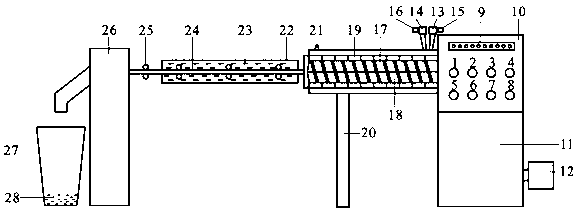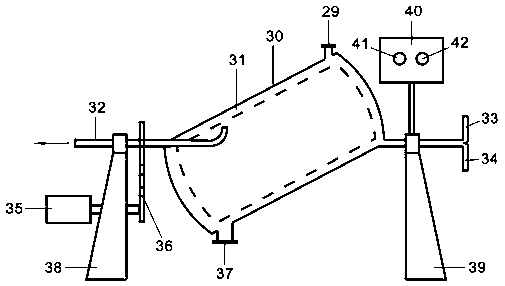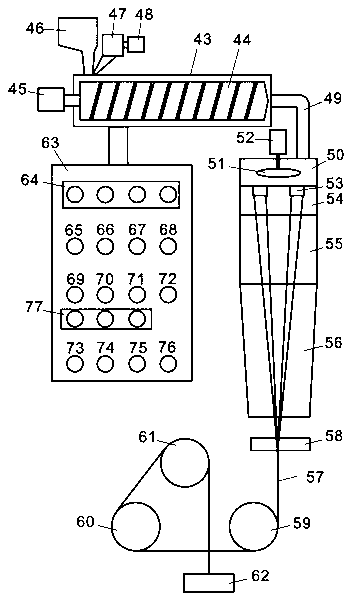Preparation method for heat-resisting polylactic acid fiber
A polylactic acid fiber, polylactic acid technology, applied in fiber processing, fibrous filler, fiber chemical characteristics and other directions, to achieve the effect of high degree of automation, short process flow, detailed and accurate data
- Summary
- Abstract
- Description
- Claims
- Application Information
AI Technical Summary
Problems solved by technology
Method used
Image
Examples
Embodiment Construction
[0069] The present invention will be further described below in conjunction with accompanying drawing:
[0070] figure 1 As shown in the figure, it is the preparation state diagram of polylactic acid + silica masterbatch. The position and connection relationship of each part must be correct, and the proportion should be adjusted according to the quantity, and the operation should be done in sequence.
[0071] Quantities of the chemical substances used in the preparation are determined according to a preset range, with grams and milliliters as measurement units.
[0072] The preparation of polylactic acid + silica masterbatch is carried out on a twin-screw extruder; the first screw 17 and the second screw 18 of the twin-screw extruder are engaged and connected, and the two screws are engaged in the same right-handed direction. The supporting frame 20 is supported, the outside of the screw rod is an insulation layer 19, and the outside of the insulation layer 19 is a vacuum pu...
PUM
| Property | Measurement | Unit |
|---|---|---|
| glass transition temperature | aaaaa | aaaaa |
| glass transition temperature | aaaaa | aaaaa |
| elongation at break | aaaaa | aaaaa |
Abstract
Description
Claims
Application Information
 Login to View More
Login to View More - R&D
- Intellectual Property
- Life Sciences
- Materials
- Tech Scout
- Unparalleled Data Quality
- Higher Quality Content
- 60% Fewer Hallucinations
Browse by: Latest US Patents, China's latest patents, Technical Efficacy Thesaurus, Application Domain, Technology Topic, Popular Technical Reports.
© 2025 PatSnap. All rights reserved.Legal|Privacy policy|Modern Slavery Act Transparency Statement|Sitemap|About US| Contact US: help@patsnap.com



